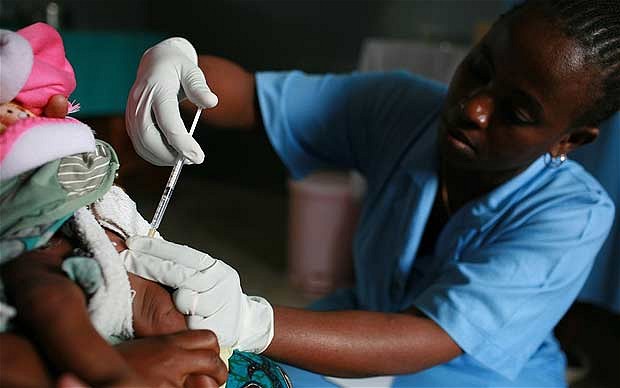By Alex Abutu
As the world prepares for the celebration of the 2014 World Malaria Day, a research team from Uganda has unraveled how to deal with faulty malaria diagnoses so as to save more lives.
The team from the Epicentre in their latest research recommended that health workers must use a different malaria test if they see children with fever in regions where malaria is very common.
Up to 30 per cent of children in rural Uganda are infected by the malaria parasite and about 18 per cent of malaria cases in the Mbarara-district are fatal.
Working in two regions in Uganda, Mbarara municipality where malaria prevalence is low and Kazo district where malaria prevalence is quite high, the research team tested more than 5 000 children during the course of the project.
Dr Yap Boum II, the Director of Epicentre, Uganda told Africasti that Epicentre is working on a communication plan to address all African countries that could benefit from the findings, adding that the results was presented to the 6th Pan-African Malaria Conference in Durban, South Africa last year.
“Hopefully we will continue to advocate so that we can have more research and change policies,” he noted.
According to Boum test used currently may remain positive for several weeks even when the patient has been cured from the malaria infections. “It can therefore give a false positive result when children present with fever again after they had malaria in the last 6 weeks.
“This means that any fever could be misdiagnosed as malaria and the child will be treated for malaria again, but may in fact have another illness, resulting in unnecessary deaths. We have assessed an alternative rapid test which gives less false positive results and does not cost any more than the current test,” he said.
The two tests are both rapid diagnostics tests. One works by detecting hystidine rich protein II (the HRP2 test), while the other detects plasmodium lactate dehydrogenase – a metabolite of the malaria parasite (the pLDH test). “Both tests are manufactured by the same companies and it should therefore be easy for hospitals and clinics to source the preferred test to use – especially in children recently diagnosed with malaria” Dr Boum II added.
“Although rapid diagnostics tests provide an invaluable improvement in the diagnosis of malaria, it is important to be aware of their limitations. We showed that performance of these tests may differ according to the intensity of the malaria transmission.”
“While waiting for the ideal rapid diagnostic test, a test that provides accurate results in all conditions, health workers today must make an informed choice between the available tests. When using the HPR2 test it is possible that they may over-treat patients and risk overlooking other possible reasons for fever. On the other hand, the pLDH presents a small risk of missing malaria cases where the patient’s parasite load is low.”
“A pLDH test with a higher sensitivity than the products currently in the market would be the optimal solution!”
An estimated 219 million cases of malaria occur around the world each year and about 660 000 people die from malaria each year. In 2010, 90 per cent of all malaria deaths occurred in the WHO African Region, mostly among children under five years of age.



